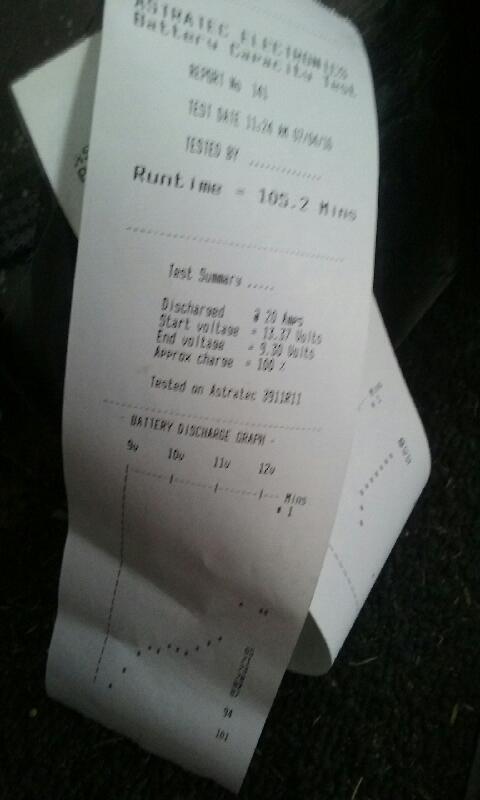- Joined
- Apr 3, 2016
- Messages
- 18
- Reaction score
- 1
Hello all,
Well I have had the batteries tested, as yet haven't got the report at hand, will pick them all up tommorrow. It would seem they are as everyone has thought and not very healthy. Apparently they tested well below what they should have done, all 3 of them. The chap at Battery Power believes it is an issue with not charging adequately? As it is very unusual that all 3 would have failed at once?
This is a link to the batteries we have:
http://www.ebay.com.au/itm/12-VOLT-...933621?hash=item417745be35:g:a8wAAOSwMmBVtW3a
I have also spoken to the chap we bought them off of, and he agreed that the charger we were sold would really only do one 130ah battery and would need a minimum of 34 to 40 ah battery charger. So Condor your suggestion of a 50 ah is not unrealistic (unlike the price 8.( .
So I guess we are looking at not only a new charger but new batteries as well. Any comments on the quality of the ones we have or what brands etc., would be recommended?
I will post the results of the tests tommorrow after I pick them up.
All of your suggestions and posts are much appreciated, I have certainly learned a lot about batteries..they're not just batteries....
Cheers
Karen
Well I have had the batteries tested, as yet haven't got the report at hand, will pick them all up tommorrow. It would seem they are as everyone has thought and not very healthy. Apparently they tested well below what they should have done, all 3 of them. The chap at Battery Power believes it is an issue with not charging adequately? As it is very unusual that all 3 would have failed at once?
This is a link to the batteries we have:
http://www.ebay.com.au/itm/12-VOLT-...933621?hash=item417745be35:g:a8wAAOSwMmBVtW3a
I have also spoken to the chap we bought them off of, and he agreed that the charger we were sold would really only do one 130ah battery and would need a minimum of 34 to 40 ah battery charger. So Condor your suggestion of a 50 ah is not unrealistic (unlike the price 8.( .
So I guess we are looking at not only a new charger but new batteries as well. Any comments on the quality of the ones we have or what brands etc., would be recommended?
I will post the results of the tests tommorrow after I pick them up.
All of your suggestions and posts are much appreciated, I have certainly learned a lot about batteries..they're not just batteries....
Cheers
Karen








